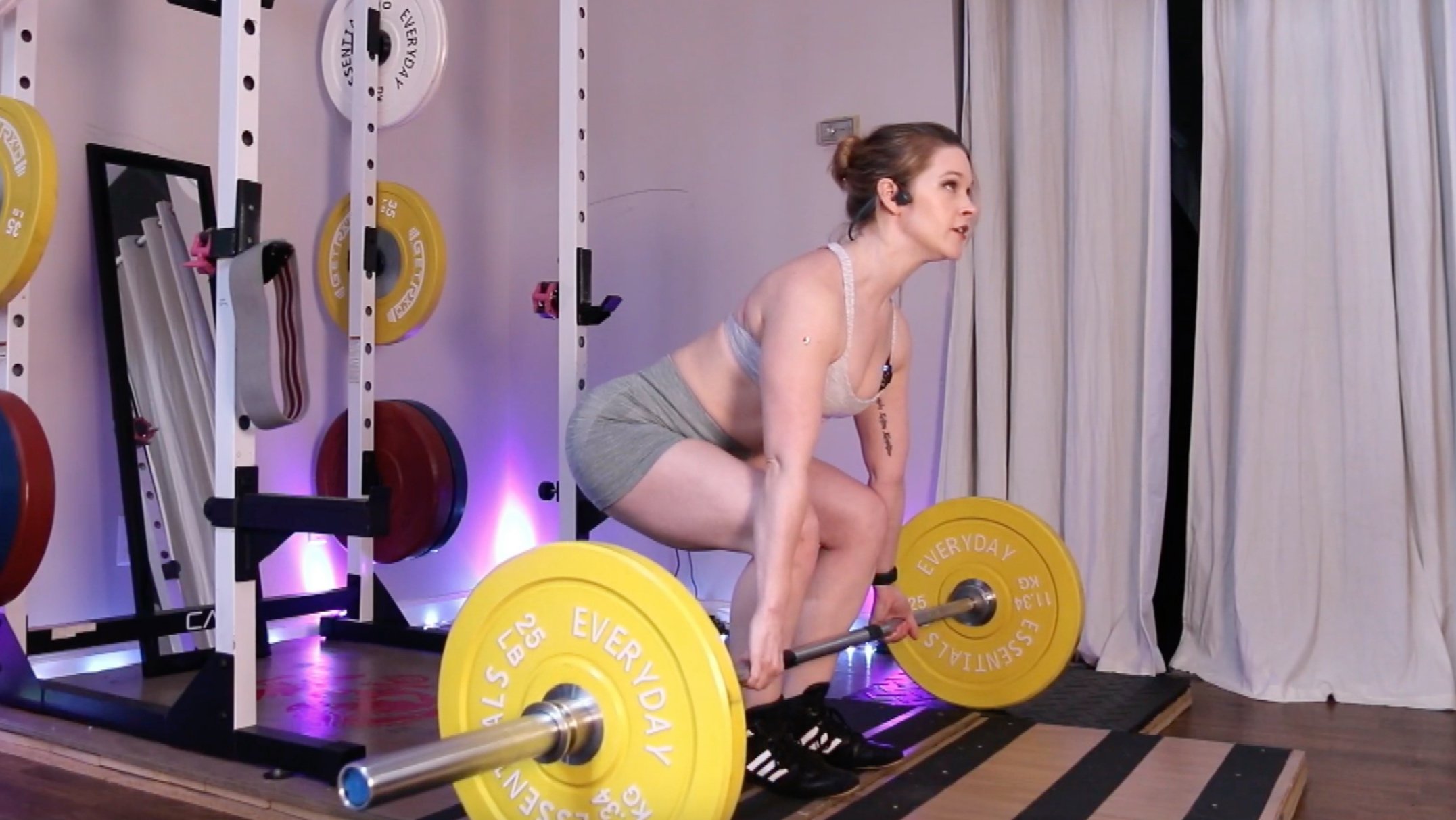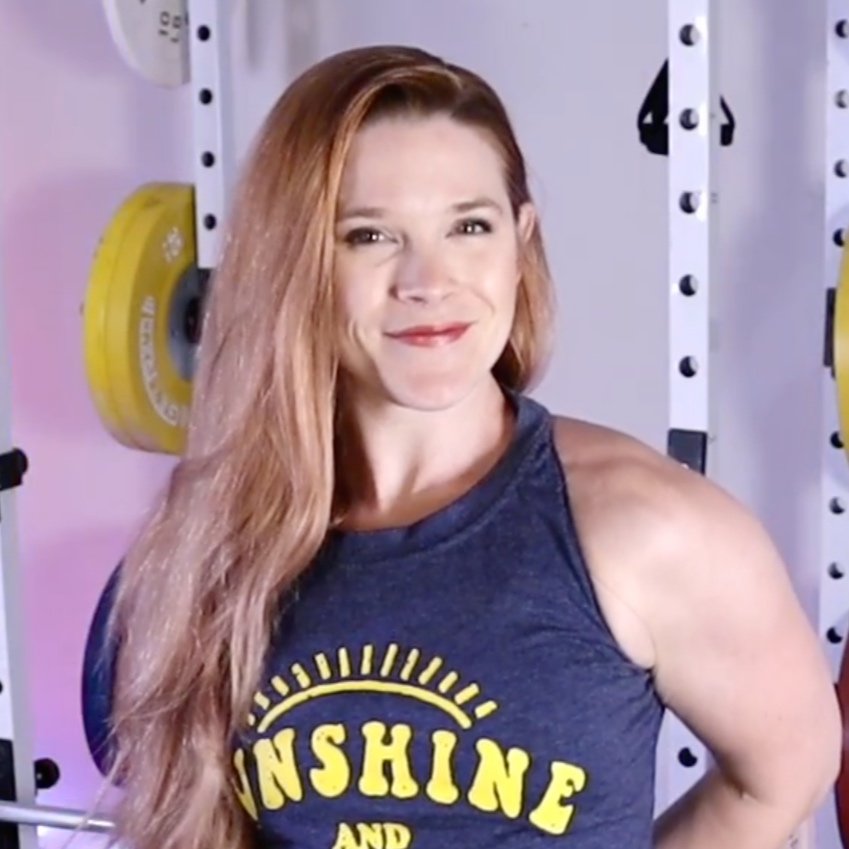Technique Tips for Conventional Deadlift
If you want to get really strong, one of the most important exercises to include in your training routine each week is the deadlift.
Deadlifts are a family of movements involving picking things up from the ground to a standing position.
There are many varieties of deadlifts with different positioning for the hands, feet, hips, and knees. Some of these variations include:
Conventional Deadlift (the topic of this post)
Sumo Deadlift
Romanian Deadlift
Stiff Leg Deadlift
Deficit Deadlifts
Single Leg Deadlift
Each variation puts slightly different emphasis on different muscle groups, however all deadlifts are good to incorporate into your training routine for a number of reasons.
First, deadlifts are great for training functional movement. We all have to pick things up from the ground from time to time. Doing this without keeping your body in good alignment can cause serious injury, including what many people call “throwing the back out.” By learning and practicing good deadlift technique, you can move more safely in your everyday life. You’ll be able to pick things up off the ground without worrying about injuring yourself.
Deadlifts are also the number one exercise for building total body strength. You get a lot of bang for your buck with deadlifts because they truly incorporate muscles throughout your whole body:
Deadlifts heavily engage the core muscles, including the deep abdominal muscles and the lower back.
Deadlifting targets the muscles of the hands, wrists, and forearms, including the flexor and extensor muscles, muscles play a vital role in grip strength and overall hand dexterity.
Your lower body muscles like glutes, hamstrings, and quads also get a ton of stimulus during deadlifts.
Conventional Deadlift
In this post, we’ll focus on the Conventional Deadlift, which is popular among strength enthusiasts and competitive powerlifters.
This variation involves lifting the bar with a narrow stance (feet under the hips), the hands placed outside the width of the feet, and a greater degree of hip hinge than the other popular competitive variation called the Sumo Deadlift.
Let’s talk about how to perform the conventional deadlift with good technique:
Begin by approaching the barbell with your feet shoulder-width apart. The barbell should be centered over the middle of your feet (if you look down you should see the bar cutting your feet in half). The barbell should be close to your shins, but not touching them.
Bend at your hips and knees, pushing your hips back behind you and keeping your back straight.
Lower down until you can grip the barbell with both hands outside the width of your hips with either an overhand grip (palms facing down) or mixed grip (one palm facing up, one palm facing down).
Adjust your hip height and bring your scapula (shoulder blades) directly over your hands. Engage your lats by squeezing your armpits.
Take a deep breath and brace your core as you fire up the muscles in your legs and back to prepare for the lift. Pull the slack out of the bar until you hear the bar “click” against the weights.
Keep tension in your upper body as you push your feet into the floor to come to standing while keeping your back straight. Keep the barbell close to your legs as you lift.
Once the barbell passes your knees, continue driving your hips forward until you are standing with your hips right under your shoulders and your knees straight (this is called “lockout”).
To lower the barbell, keep the barbell close to your legs as you push your hips back behind yourwhile keeping your core and lats engaged. Continue pushing your hips back and slightly bending your knees until the barbell is back on the floor.
Repeat the movement for the number of repetitions recommended in your training program.
Some Notes to Remember for Conventional Deadlifts:
Start with lighter weights and gradually increase the load as you become comfortable with the movement and develop good technique.
Keep the barbell close to your body to minimize stress on your lower back and maintain proper mechanics. Avoid reaching the weight towards the floor with your shoulders and spine rounding forward. Instead, keep your back straight with your chest pushing through your arms throughout the entire movement.
Don’t think about the deadlift as an “up and down” movement, but rather as a “back and forth” movement in the hips.
If you're new to deadlifting or have concerns about your form, consider working with a qualified strength and conditioning professional or a personal trainer for guidance and feedback.
Troubleshooting Common Conventional Deadlift Problems
Rounded Back
We never want to practice deadlifting with a rounded spine, as this can lead to spinal injuries like bulging or ruptured disks, back strains, and sprains. You should always keep your lats engaged and think about pushing your chest through your arms to keep your back straight throughout the movement.
Also learn how to brace your core, which involves taking a deep breath into your belly and holding it while engaging your abdominals and other core muscles. Hold this breath while the weight is in motion, breathing only at the top and the bottom of the movement.
Shins Too Far Forward
When setting up for your deadlift, try to keep your shins as vertical as possible. Avoid allowing your knees to come forward towards your toes in a squat position. This will take away your ability to activate your glutes and hamstrings—which are the prime movers of the conventional deadlift.
This position also creates an obstacle for the bar to travel over, which means you’ll waste precious energy stabilizing the bar as it goes over your knees. Ideally, we want to see the bar travel straight up and down. So keep those hips back, back, back and your knees out of the bar’s way.
If you have trouble keeping your shins vertical, you should work on your hamstring and glute flexibility with exercises like the straight leg deadlift.
Torso Too Upright
Another common mistake is squatting too far down toward the bar with your torso upright. The deadlift is not a squat. It’s a hip-hinge dominant movement with a little bit of knee bend—whereas the squat is more knee-bending dominant. Using the muscles in the back of the body (i.e., glutes & hamstrings) is the most efficient way to lift the bar from the narrow stance position. Squatting too much towards the bar moves your center of gravity and makes the bar move less efficiently. It’s also likely to cause your knees to shoot forward over the bar, which can push the bar path forward and cause strain in your lower back.
Again, while getting into position, think about pushing your hips back, back, back and keeping your knees back behind the bar with vertical shins.
Hips Rising Too Fast
One common error lifters make is shooting their hips up and locking out the knees before the upper body moves. This causes the bar to shift forward, which puts more strain on the lower back. When lifting the bar from the floor, you ideally want your hips and shoulders moving at the same time and at the same rate. You can avoid this by pulling your body into position before the weight starts to move. Keep tension in your upper body and imagine pushing the floor away as you pull your shoulders back.
The Bar is Too Far Forward
As you perform the deadlift, your goal should be to keep the weight as close to the center line of your body as possible throughout the lift. Many people allow the weight to come forward away from their legs, which puts strain on the lower back. Think instead about dragging the bar along the front of your legs (I tell my clients: “shave your legs with the bar”).
Technique Reviews on Twitch
Join me live on my Twitch channel on Tuesdays for Technique Reviews! I go into further detail on different exercise techniques and review examples from members of the community. If you’d like some feedback on your exercise form, make sure to:
Join my Coaching Corner Discord server and follow me on Twitch
Subscribe to the Coaching Corner Discord as a Supporter or Supporter+
In the Coaching Corner Discord server, choose the “Workouts &. Fitness” role in the #choose-roles channel
Post your exercise videos to the #technique-reviews channel each week to get reviewed while I’m live on Twitch
About the Author
Jayd Harrison (aka Jaydigains) is a health coach, personal trainer, and host of the Coaching Corner Podcast. She helps people build muscle, burn fat, and clean up their diets with her online coaching programs and other online content. Check out some of Jayd’s coaching videos on Youtube, or join Jayd live on Twitch and follow on social media.
Sign up for updates ✉️
Sign up for more exercise tips and get notified whenever I post to the Training Blog. Fill out the form below:
Your privacy is important to me! I will never share your information with any third party. Unsubscribe from the email list at any time.




